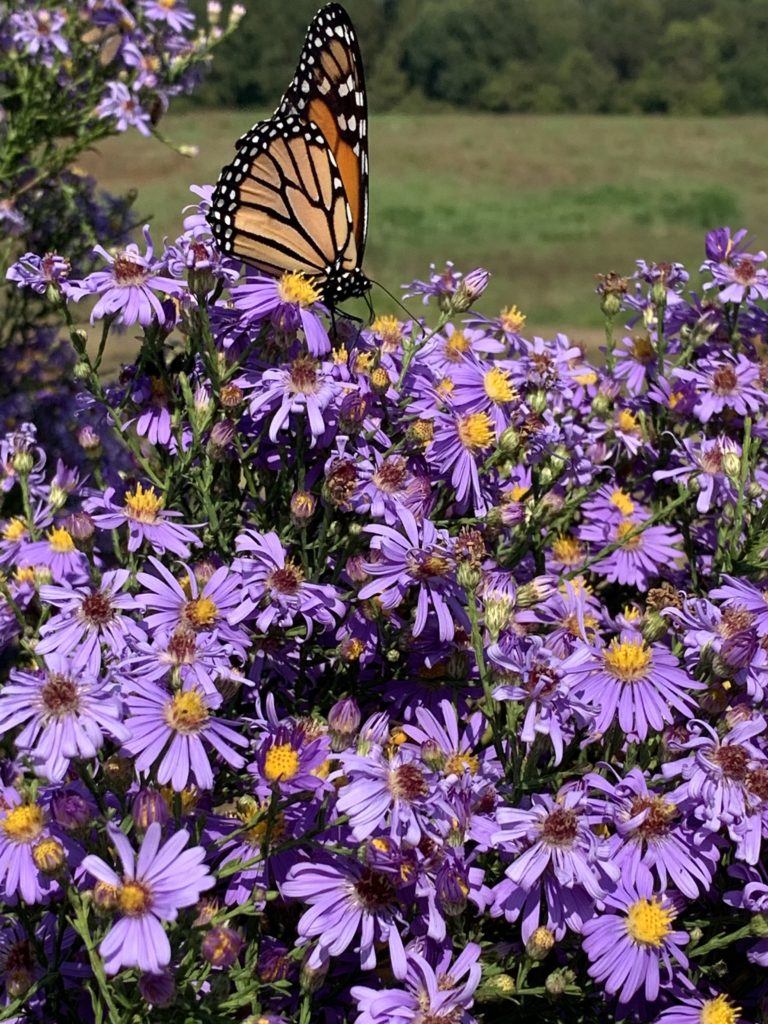Gardening for Health

Dreaming of Springtime
By Maria Price
Since our weather has been rather inhospitable, maybe it’s time to dream about spring and plan your garden.
When thinking about your garden, consider what native plants to add if you’d like to increase the number of butterflies, moths, and other pollinators that visit. You’ll need plenty of nectar-rich flowers but also you need the important natives that act as host plants for butterflies and moths.
Butterflies and moths need to lay their eggs on the leaves of certain plants to nourish the new caterpillars. I believe most people have heard about milkweeds then how important they are for our declining monarch butterflies. There are many kinds of native milkweeds that attract butterflies. Monarchs will lay their eggs on the underside of Asclepias tuberosa, also known as butterfly weed, which has beautiful orange flowers. Asclepias incarnata or swamp milkweed has clusters of beautiful pink flowers and Asclepias syriaca has a whitish-pink fragrant cluster of flowers.
The skipper butterfly, which has a 1- to 2-inch wingspan, is recognized by its darting flight pattern. Their host plants are native grasses, legumes and mallows; they also like sidalcea, wisteria and locust.
The Viceroy butterfly, which resembles the monarch, likes willows and poplars.
Those beautiful swallowtails with their colorful, 5-inch wingspan that glide into your garden seek nectar from a wide variety of flowers. The black swallowtails like parsley, dill and Queen Anne’s lace. Plant some extra parsley and dill away from your herb garden as they can make a patch of parsley disappear overnight. The eastern tiger swallowtail, which is black and yellow, prefers ash trees, birches, black cherry and tulip trees as their host plant. The giant swallowtail, which is black with a yellow stripe across its body, prefers prickly ash and citrus trees. The pipevine swallowtail, which has glossy blue-black wings, prefers our native Dutchman’s pipevine (Aristolochia). The zebra swallowtails like our native pawpaw trees.
The cabbage whites love the vegetable garden as they lay their eggs on everything in the mustard or Brassica family, which includes kale, cabbage, broccoli and cauliflower. It’s best to cover those plants with insect netting if you see white butterflies flying over them in late spring. Trying planting nasturtiums and spider flowers, which could be used to lure them away from your vegetable patch.
Make your plans now to create a garden that will be full of beautiful butterflies this spring and help keep the pollinator populations thriving.
